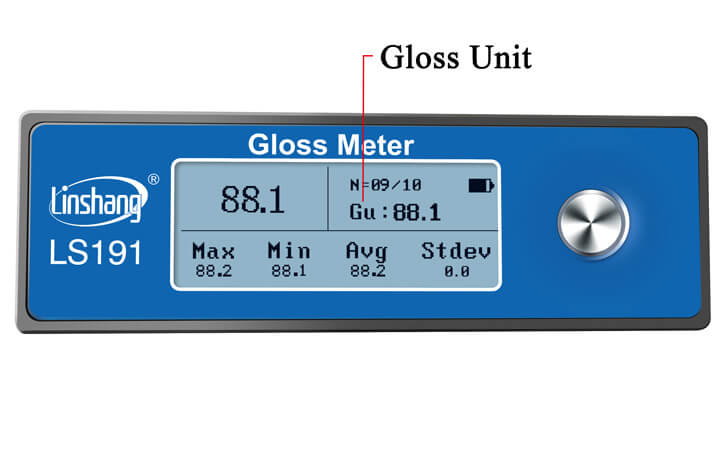Gloss Metre Unit and Application Area
LS191 gloss metre (also a gloss meter) is an instrument used to measure the specular reflection gloss of a surface. The gloss is determined by projecting the beam onto the surface at a fixed intensity and angle and measuring the amount of reflected light at an equal but opposite angle.
1. Gloss Metre Unit
The gloss metre measures the scale, the gloss unit (GU) is based on the proportion of the highly polished reference black glass standard, which has a limited refractive index with a specular reflectivity of 100GU at a specified angle.
This standard is used to establish an upper point calibration of 100 with the lower end point established at 0 on a perfectly matte surface. This scale is suitable for most non-metallic coatings and materials (paints and plastics) as they are usually within this range. For other materials, the appearance of a highly reflective (mirror, electroplating/raw material component) can achieve a higher value of 2000 gloss units. For transparent materials, these values can also be increased due to multiple reflections within the material. For these applications, the percentage reflection of incident light is typically used instead of the glossy unit.
2. Gloss Metre Application Areas
There are many different geometry shapes that can be used for gloss measurements, each depending on the type of surface to be tested. For non-metallic metals such as coatings and plastics, the amount of reflected light increases with a greater angle of exposure, as some light penetrates the surface material and is absorbed into it or scattered from it according to its color.
Metals have a higher reflectivity and therefore have a less angle-dependent. Many international technical standards can be used to define the use methods and specifications of different types of gloss metres, which are used in various types of materials, including paints, ceramics, paper, metals and plastics. Many industries use gloss metres in their quality control to measure the glossiness of products to ensure consistency in their manufacturing processes. The automotive industry is a major user of gloss metres, with applications ranging from factory floors to workshops.
